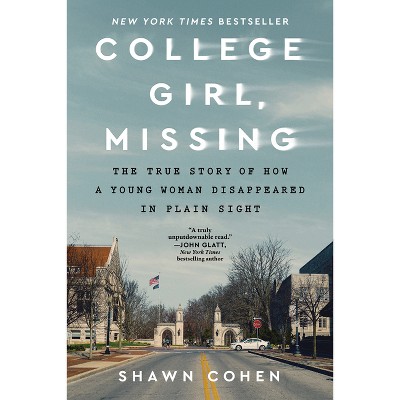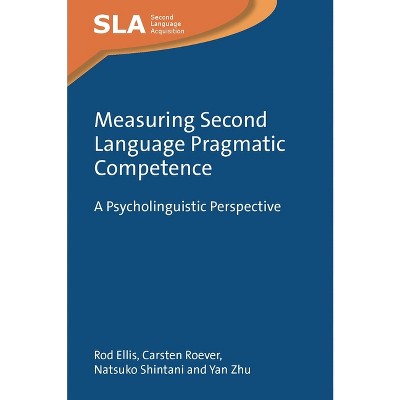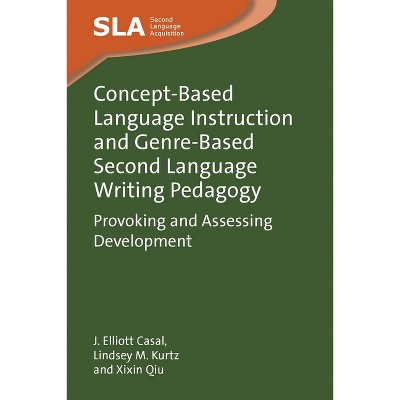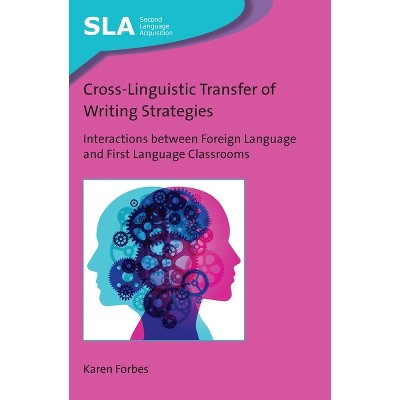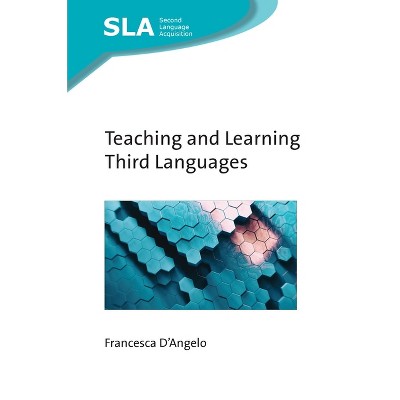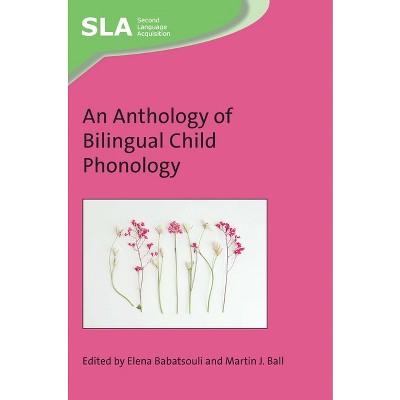Measuring L2 Proficiency - (Second Language Acquisition) by Pascale LeClercq & Amanda Edmonds & Heather Hilton (Paperback)

About this item
Highlights
- This book brings together ideas on identifying and measuring second language proficiency.
- About the Author: Pascale Leclercq is a Lecturer in the English Studies Department of Université Paul Valéry Montpellier 3, France, where she teaches English as a Foreign Language, second language acquisition and L2 pedagogy to undergraduate and postgraduate students, and trains future language teachers.
- 248 Pages
- Language + Art + Disciplines, Study & Teaching
- Series Name: Second Language Acquisition
Description
About the Book
This book brings together ideas on identifying and measuring second language proficiency. The chapters introduce a range of tools for the evaluation of learners' language level with respect to both productive and receptive skills and provide a variety of answers to the question of how to assess L2 proficiency in a valid, reliable and practical way.Book Synopsis
This book brings together ideas on identifying and measuring second language proficiency. The chapters introduce a range of tools for the evaluation of learners' language level with respect to both productive and receptive skills and provide a variety of answers to the question of how to assess L2 proficiency in a valid, reliable and practical way.
Review Quotes
Offering new insights into SLA, language proficiency research and innovative measurement technologies, this rich volume contributes to a deeper understanding of the proficiency construct. Drawing from linguistic, cognitive and educational perspectives, it particularly explores proficiency indicators that are valid, reliable and easily-implemented. It is essential reading for SLA researchers.
The eleven chapters contained in this volume have contributed greatly to the field of SLA as they provide a variety of answers to the question of how to assess L2 proficiency. The chapters are coherent in themselves as they provide a broad understanding of the concepts on the assessment of proficiency making a meaningful whole.
This book is devoted to a neglected but important aspect in SLA research: proper assessment of participants' L2 proficiency. I therefore warmly recommend this book to both seasoned and novice SLA researchers. The book starts with an accessible introductory chapter on assessment of L2 proficiency in SLA research. Then follow ten chapters giving state-of-the-art information on a wide range of techniques forming part of proficiency assessment. Read this book if you wonder what proficiency assessment has to do with matters such as: CEFR levels, learner corpora and error tagging, comprehension restitution, translation recognition, fluency index, inter-rater agreement, phraseology, coefficient of variation, semantic priming, and online collaboration between researchers.
This book's value lies in renewing interest in a long-standing, thorny issue that often receives less contemplation than it is due. Researchers, testing and assessment specialists, and advanced students will fi nd much to ponder, and the field should welcome and embrace the editors' appeal for profi ciency measures that are feasible, reliable, and that allow for comparisons between studies of different L2s.
This excellent book addresses three related questions that are at the heart of all research in second/foreign language acquisition, applied linguistics and language testing: What constitutes L2 proficiency? What makes a second language (L2) learner a proficient language user? And how can L2 proficiency, in all its multifacetedness, be adequately (i.e. validly but also reliably and feasibly) measured? What makes this timely volume unique is that these questions are approached not from a language testing perspective but from different branches within second language learning and teaching research. As such, this volume marks a much needed renewal of interest in reliability and feasibility as key criteria in L2 proficiency assessment. It offers most stimulating and rewarding reading for second language researchers and practitioners alike.
Offering new insights into SLA, language proficiency research and innovative measurement technologies, this rich volume contributes to a deeper understanding of the proficiency construct. Drawing from linguistic, cognitive and educational perspectives, it particularly explores proficiency indicators that are valid, reliable and easily-implemented. It is essential reading for SLA researchers.
-- "Inge Bartning, Stockholm University, Sweden"The eleven chapters contained in this volume have contributed greatly to the field of SLA as they provide a variety of answers to the question of how to assess L2 proficiency. The chapters are coherent in themselves as they provide a broad understanding of the concepts on the assessment of proficiency making a meaningful whole.
--Zehra Savran, Firat University, Turkey "International Journal of Applied Linguistics 167:1"This book is devoted to a neglected but important aspect in SLA research: proper assessment of participants' L2 proficiency. I therefore warmly recommend this book to both seasoned and novice SLA researchers. The book starts with an accessible introductory chapter on assessment of L2 proficiency in SLA research. Then follow ten chapters giving state-of-the-art information on a wide range of techniques forming part of proficiency assessment. Read this book if you wonder what proficiency assessment has to do with matters such as: CEFR levels, learner corpora and error tagging, comprehension restitution, translation recognition, fluency index, inter-rater agreement, phraseology, coefficient of variation, semantic priming, and online collaboration between researchers.
-- "Jan Hulstijn, University of Amsterdam, Netherlands"This book's value lies in renewing interest in a long-standing, thorny issue that often receives less contemplation than it is due. Researchers, testing and assessment specialists, and advanced students will fi nd much to ponder, and the field should welcome and embrace the editors' appeal for profi ciency measures that are feasible, reliable, and that allow for comparisons between studies of different L2s.
--Bryan Donaldson, University of California, Santa Cruz, USA "Studies in Second Language Acquisition, 2015"This excellent book addresses three related questions that are at the heart of all research in second/foreign language acquisition, applied linguistics and language testing: What constitutes L2 proficiency? What makes a second language (L2) learner a proficient language user? And how can L2 proficiency, in all its multifacetedness, be adequately (i.e. validly but also reliably and feasibly) measured? What makes this timely volume unique is that these questions are approached not from a language testing perspective but from different branches within second language learning and teaching research. As such, this volume marks a much needed renewal of interest in reliability and feasibility as key criteria in L2 proficiency assessment. It offers most stimulating and rewarding reading for second language researchers and practitioners alike.
-- "Alex Housen, University of Brussels (VUB), Belgium"About the Author
Pascale Leclercq is a Lecturer in the English Studies Department of Université Paul Valéry Montpellier 3, France, where she teaches English as a Foreign Language, second language acquisition and L2 pedagogy to undergraduate and postgraduate students, and trains future language teachers.
Amanda Edmonds is a Lecturer in French as a Foreign Language at the Université de Pau et des Pays de l'Adour, France. She is currently director of the Master's program in French as a Foreign Language, and her teaching includes courses on FFL, second language acquisition, and language pedagogy.
Heather Hilton is a Professor in the Language Department at the Université de Lyon 2, France. She has extensive experience of language teaching and now researches language acquisition and foreign language teaching methodology with a particular focus on young learners and learners with learning differences.





